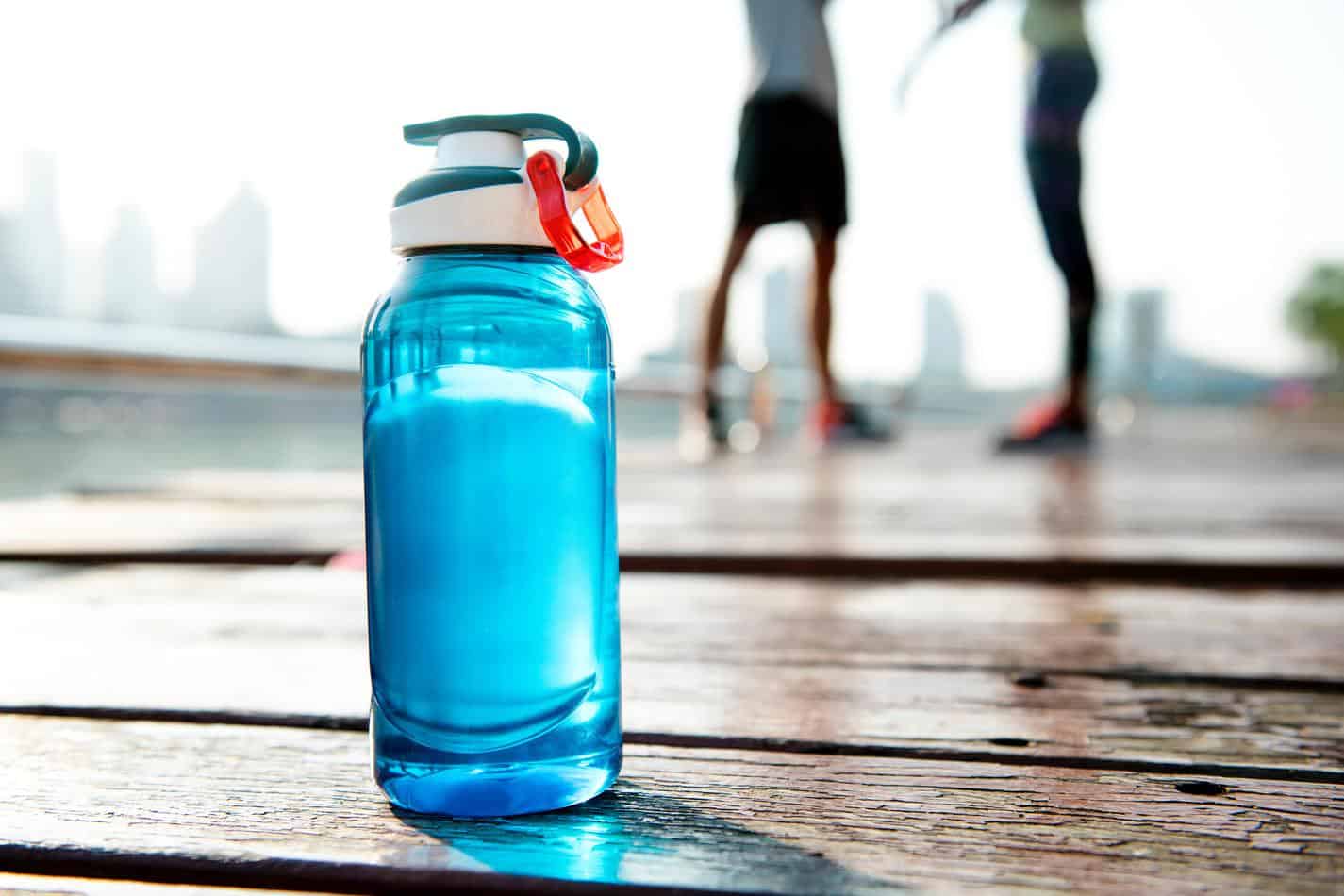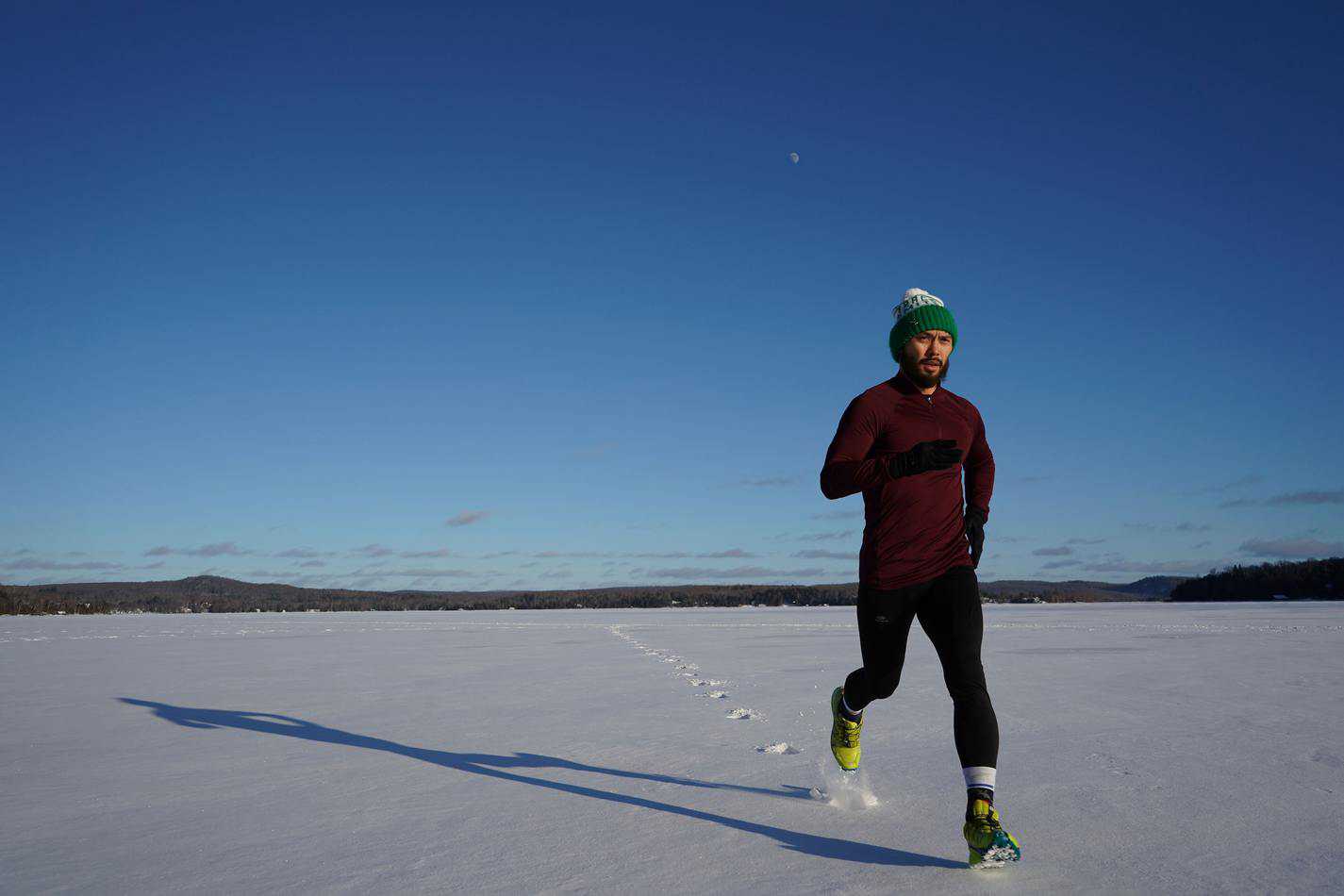I’ve never run a marathon without carrying my own water and fuel. There are a lot of reasons I do this, but lately I’ve been wondering if I’m hindering my performance at all by doing so. I wanted to look into both the advantages and disadvantages of carrying your own water in a marathon as well as the best options for carrying if you decide to go that route.
The reason I got to thinking about this question so much lately is because I’ve read about elites being able to place water bottles along the course. Clearly they don’t want to carry water OR stop at water stops with cups. We common folk don’t get this choice.
The question is, which is better? Carrying your own water and fuel or using what’s provided on the course? You have a lot more control over when you drink water and fuel when you carry your own in a marathon. You can also choose which fuel you use. On the other hand, carrying something (whether in your hand, in a vest or backpack, or around your waist, can be cumbersome.) Hopefully by the end of this article you’ll know the pros and cons so you can make an informed decision about what works best for you! (And if you do decide to carry water, we’ll cover the best ways to do so.
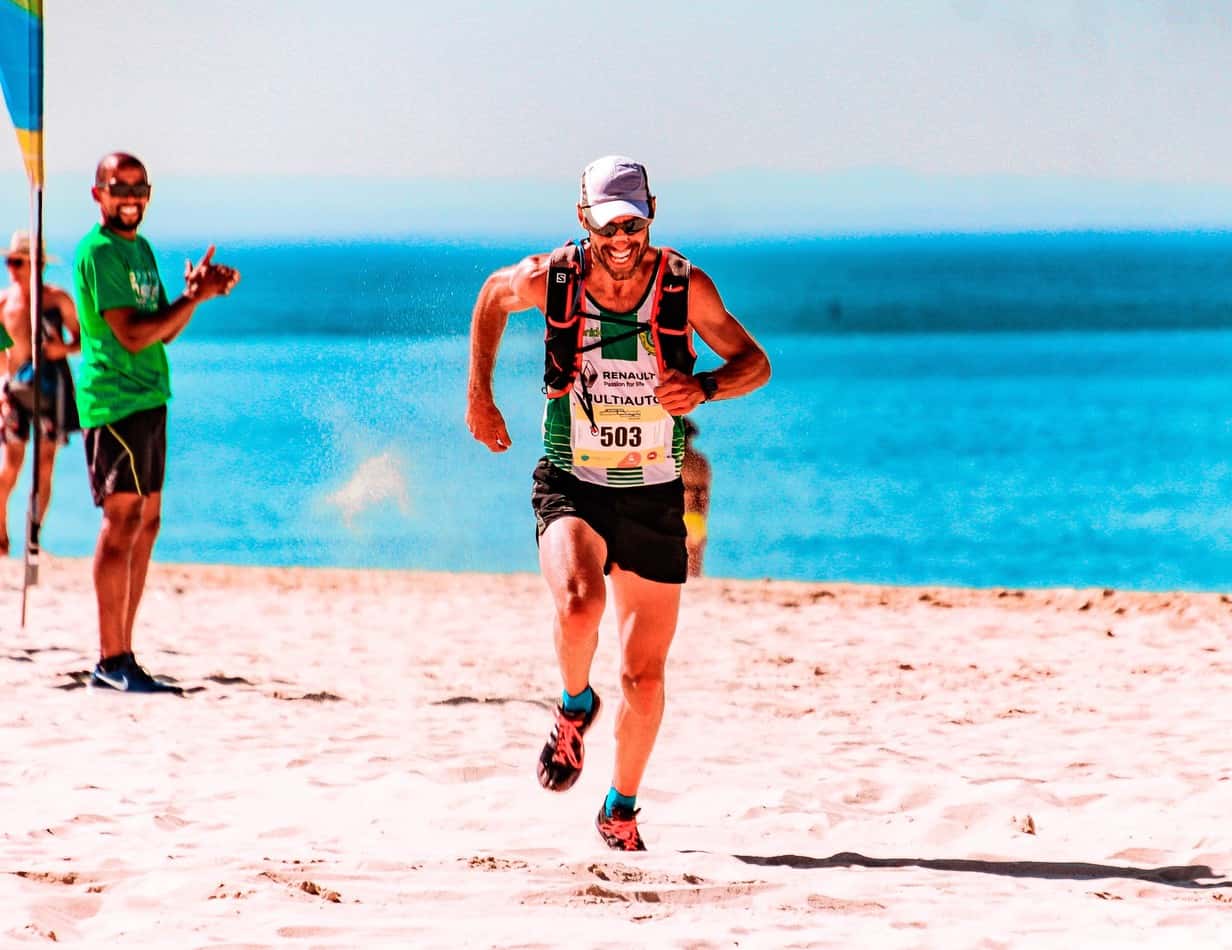
The Advantages of Carrying Your Own Water and Fuel
When I trained for a couple of marathons in my 20s, I had a belt I wore around my waist for all of my long runs. It held one large water bottle and I could stash a couple of gels as well. I absolutely hated it and it bothered me the entire time. I could just never get it to fit right, but there also weren’t a lot of other options at the time. Though I didn’t have a choice for my long runs, I still decided to wear it during my marathons.
Why?
Because I was so afraid of choking on water with the cups at the water stops. I think this is a valid fear though! It’s kind of an art form to run and drink from a cup at the same time. I mean, I probably just should have walked through the water stations but I was worried about losing time. This ended up being kind of silly since I walked a significant amount of both those marathons after mile 20.
Now, as a sub-3:40 marathoner, the losing time factor still gets in my head. Though I’m learning more and more that a little slow down for things like that isn’t always such a dealbreaker.
Even still, there are a lot of great reasons to carry your own water and fuel.
This is why I do.
Hydrate and fuel on your own schedule – no one else’s.
Most marathons put water stops ever 2-3 miles. Fuel, through the form of gels, will likely be available during 3-5 of the stops along the course. This leaves you at the mercy of the stops available to determine when you’ll drink up and fuel.
Maybe you like taking in just a little bit every mile but that’s not going to be possible. Or perhaps you prefer to wait longer but take in more each time. Or MAYBE which is very normal, you just want to take in water when you feel it seems right. Though having a hydrating and fueling schedule is a smart plan, and you should, sometimes you might need a little extra (or less) depending on the weather that day. Carrying your own water means you don’t have to have this figured out to a T ahead of time.
Be sure you’re getting enough hydration and fuel.
If you don’t carry your own water and fuel, you risk not taking in enough. It is recommended that runners drink roughly 6 ounces of water every 20 minutes. At this point, you’ve probably found a hydrating and fueling method that works best for you. So that’s what you should stick pretty close to. I honestly don’t think I would drink enough water if I relied on the water stops provided. Even if I stopped every time there was one, I’m not sure I would really consume as much as I needed.
The other side to this is that marathons have even run out of water before! It’s rare, but it happens – such as in the heat of the 2007 Chicago Marathon. This article from TIME references one runner’s experience where he was told as early as the 2nd water stop that he was, “too late” to get water. Could you imagine?! That sounds awful. Carrying your own water can also mean the difference between hydrating or not at all.
RELATED: How to Hydrate for Your Next Half Marathon
Choose your own hydration and fuel.
So this one is huge for me. Water is water, right? But everyone’s fueling choices are different. It often takes quite a bit of trial and error to figure out what works best for your body to perform as well as something that’s easy on your stomach. You might be thinking, well, I can just carry gels in my pockets and get water at the stations. Yes, you absolutely can! I’d guess that’s what most people do. But for me, my “water” is both my hydration and my fuel.
Because of my dislike of swallowing gels while I run as well as stomach issues I’ve experienced in the past, I started using a carbohydrate-electrolyte drink called Sword. (Similar to Tailwind Nutrition which is also very popular.) My husband did a lot of research on it, so we both decided to try it. It’s different from Gatorade because it has 36 grams of carbs per serving. This means it can be used as both fuel to stave off hunger and give lasting energy, while also being full of the hydration and electrolytes necessary to run a marathon. So, that’s all I put in my Camelbak. I have a hard time imagining ever going back to gels!
No stopping among the throng of runners trying to get water.
Sometimes it gets so crowded at the water stops. This is especially true earlier on in the race. If you start among runners of varying paces, chances are you are going to get stuck behind some slower runners. As if this isn’t frustrating enough, then you have to wait your turn to get water at the stations. Or someone stops abruptly in front of you to take a drink. This is something I’m happy to avoid…I just keep on trucking down the middle of the road.
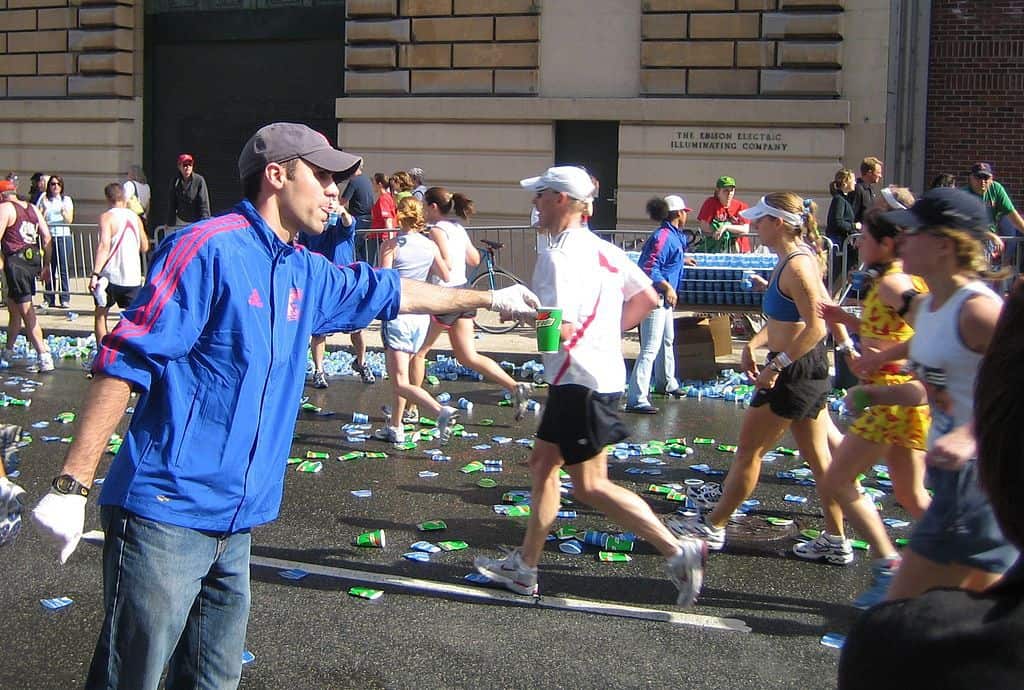
Avoid choking down water using a cup.
This is probably one I could master if I actually tried a little harder. I know you’re supposed to pinch the cup to be able to drink it more easily while moving, but I prefer to just stop in front of a trash can, slam it, and then throw it away. (Yes, it’s OK to throw your cup down on the ground if it’s off to the side and out of the way of runners. I try not to do this though.) The problem with slamming it is that I may be drinking it to fast and it could upset my stomach. But if I try drinking and running, I could choke on it…messing up my race mojo. I mean, I know I’m not alone in this.
There are quite a few advantages of carrying your own water, and thus far, the advantages outweigh the disadvantages for me. From time to time, however, I do prefer to run a little “free-er” (even though my hydration vest is mostly unnoticeable) and wonder if I should run the marathons without it.
Disadvantages of Carrying Your Own Water and Fuel
Carrying your own water and fuel gives you a lot of free choice. You don’t have to go off of anyone else’s schedule or take in a type of fuel you’re not used to (or risk getting no water at all!)
But, it’s not perfect either. There are definitely reasons why runners don’t want to carry their own water and fuel during a race. If you notice the elites, they never carry their own water (but lucky them, they usually get special placement of their own water bottles ahead of time.)
Here are the downsides of carrying your own water and fuel.
You need to find a place to put your water and gels.
There are quite a few choices these days for carrying water and fuel during your long runs and marathon. But, it’s still something you’ll have to wear on your body. If you have pockets in your shorts or shirt (or some women stuff them in their sports bra) you’ll be able to store a few gels pretty easily. But water will have to go into an extra wearable. This is either in the form of a belt, backpack, or vest. Even the best ones don’t always feel great for the duration of the run and they do add a little extra weight. You’ll have to spend a little extra money to invest in something good and it’s important to find the type that works best for you. Belts never worked for me, whereas my backpack is pretty comfortable.
The other alternative is to hold your water in your hand for the duration of the race. My husband can’t stand wearing anything, so he carried a water bottle for an entire marathon (so he could drink Sword).
Wearing hydration and fuel can be uncomfortable.
I think my Camelbak is pretty great, but I have definitely had some chafing issues using it on a longer run on a hot day. If just one little part of it is out of place and starts rubbing in an unexpected area, that area can get pretty raw. And I even try to use all my tips I outlined in this article: “How to Stop Chafing in Marathon Training”. Not to mention, as a run goes on, sometimes you just don’t want the weight of anything extra on you.
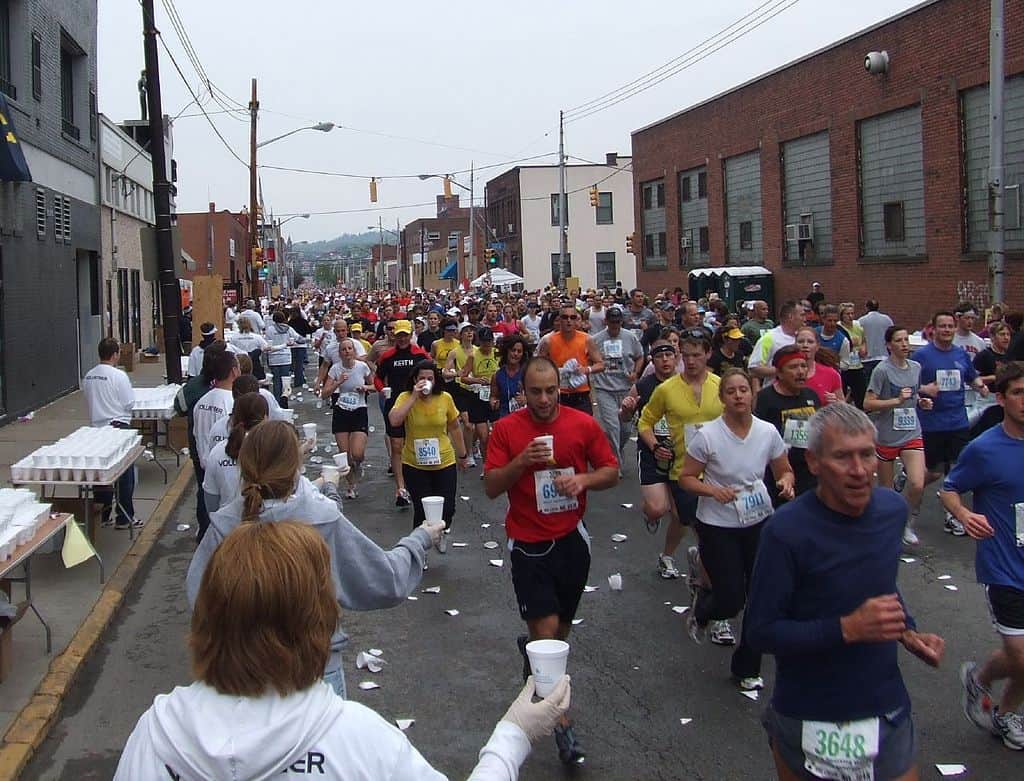
One other thing to consider is that carrying something is going to be a little extra weight and could potentially slow you down. But so can water stops. So, I call that a wash.
To Carry or Not To Carry for your Next Marathon
There are many advantages to carrying your own water and fuel for your marathon with a few drawbacks. However, the drawbacks are great enough that most people choose to use the fuel and hydration provided on course and not wear it on their body. For now I plan to continue to carry my own fuel just because I love my carb-electrolyte so much and don’t want to swap it for something else that’s on the course.
Here’s my recommendation for you:
Carry your water and fuel if…you are a picky person when it comes to your fuel, I would highly recommend that you bring your own to the course. It is possible that the race might have your preferred fuel, but it’s unlikely. My marathon coming up will have Gatorade and I guarantee I won’t be drinking that…for me, personally, that’s a gut bomb waiting to happen.
I would also suggest carrying your own water and fuel if this is your first marathon. I believe this will set you up for a lot more success in your hydrating strategy which is huge in terms of accomplishing your race day goals. Read on to find out the best ways to carry water in your marathon.
Don’t carry your own water and fuel if…you have an iron stomach. Some people can get away with eating and drinking anything on their runs. If that’s you, you probably have no reason to worry about what’s being offered on the course. (Though it would be smart to train with the exact fuel that will be offered at your particular race.) If you have a lot of experience drinking on the go then you’ll probably be fine going about it this way.
If you’ve also tried carrying water before and you just can’t find something comfortable, I’d probably suggest going without on race day. Otherwise this is just going to bother you and being uncomfortable for any reason on race day is never fun.
Or do a combo! [2021 update!!]: For both my marathons in 2021 I still carried my own nutrition and hydration, but I also took water along the course. I found a method that works well for me. I wear shorts with pockets (these are my favorite) and then I put an 8.5 ounce Fitly water bottle in each pocket. One holds plain water so I can always have water on me when I take a gel, and the other has Tailwind Endurance fuel which I use to supplement my nutrition from gels. But I need more than 17 ounces of water during a marathon, so I take in water at most of the aid stations. I like to walk through them which works well for me – I talk about this strategy in my CIM race prep video.
How to Carry Water for Your Long Run and Marathon
Whether or not you choose to carry your own water in your marathon is entirely up to you. But for your long runs, you’re undoubtedly going to need some way to carry your own water and fuel. There are some pretty awesome ways to carry your water these days, and these are my top 3 recommendations.
Nathan makes my favorite vests. The unisex Pinnacle 4L Running Hydration Vest is super lightweight and perfect for any long distance where you want to carry two different liquids. Although I love drinking Tailwind (combined hydration, electrolytes and nutrition that’s quite sweet), I do get thirsty for some regular water as my long runs go along. So I love that this has spots for two different water bottles. Many people would like to have an electrolyte on one side and water on the other, I’m sure.
CamelBak HydroBak – This backpack has a minimalist design that’s light and easy to carry. It holds 50 ounces of water, which is close to the perfect amount for your 26.2 miles. (Remember that water at the aid stations will be available as a back up if you need more.) This isn’t the design I have, but it looks similar and probably feels like mine. It should be pretty comfortable and won’t get in the way.
CamelBak Kid’s Mini M.U.L.E. – “Kids” you ask? Haha, yep. This is the pack I was using until I got my vest. I know this won’t work for everyone, but smaller women will be able to get away with this one. My daughter got it as a gift one year for her birthday and on a whim one day, after being sick of wearing a hydration belt (I don’t recommend these but I know they work for some people), I thought, “What the heck!” It worked great for me. It’s small, lightweight, and holds 50 ounces of water which is plenty. Through 3 years of marathon running and a BQ (and countless long runs) it’s still going strong. I definitely recommend it!
Have a marathon coming up? Don’t sabotage your race…read: “Why Banking Time in Your Marathon is a Bad Idea.”
